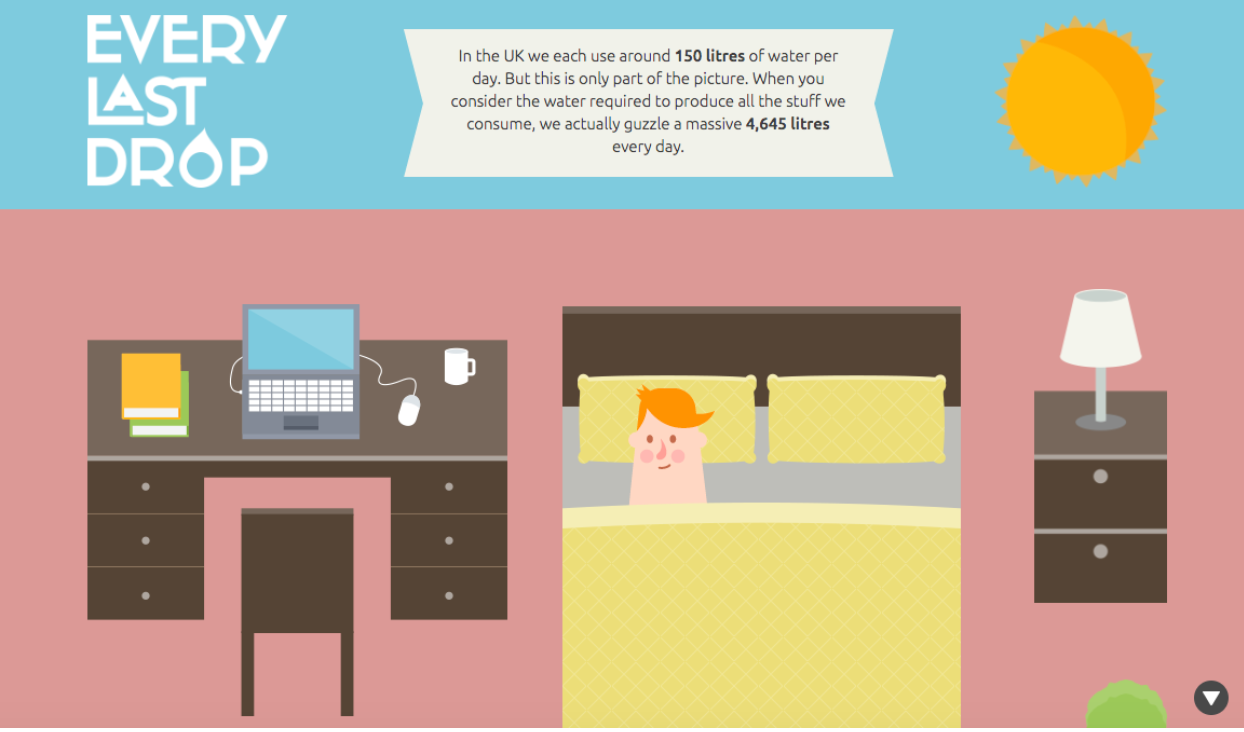Microsites rose to prominence due to the growing complexities of promoting a corporate website for marketing purposes. Most corporate sites are very broad and contain a lot of information from company literature, FAQs, blog content, to product and services categories. A microsite, on the other hand, is much more focused and allows brands to deliver high-impact messages to a specific target market, leaving little room for ambiguity.
Microsites are ideal for driving traffic to niche content, and they’re therefore great for converting niche audiences. And they also offer more control in terms of design and flexibility. For these reasons, we’re seeing more and more marketers now opting to utilize microsites as part of their overall digital marketing strategy.
In this article, we’ve shared our ultimate guide to help you build your own microsite — fast.
How to Build a Microsite (In Just 7 Simple Steps)
A mircosite may be small by definition, but that shouldn’t mean that they’re done haphazardly. The seven steps below will help you build a microsite that’s optimized for conversions.
- Define the Objectives of Your Microsite
Before attempting to build your microsite, you must first clearly outline the objectives and purpose of your microsite. Start by identifying and building your buyer persona, or personas. A buyer persona will help you get a hypothetical image of your target market. Most buyer’s personas will highlight your target market’s interests, needs, and desires — this will help you achieve consistency in both your design and content.
Next, you need to set out your goals and objectives of your microsite. Is the purpose of your microsite to generate leads or improve conversion? Or do you want to build brand awareness through encouraging consumer engagement and interaction?
Ensure your goals and objectives are specific and measurable. For instance, “getting more web traffic” is not a clear and measurable objective, whereas, “increasing web conversion by 8 percent by Q3” is a clear objective.
Here are some more examples of measurable objectives:
Before attempting to build your microsite, you must first clearly outline the objectives and purpose of your microsite. Start by identifying and building your buyer persona, or personas. A buyer persona will help you get a hypothetical image of your target market. Most buyer’s personas will highlight your target market’s interests, needs, and desires — this will help you achieve consistency in both your design and content.
Next, you need to set out your goals and objectives of your microsite. Is the purpose of your microsite to generate leads or improve conversion? Or do you want to build brand awareness through encouraging consumer engagement and interaction?
Ensure your goals and objectives are specific and measurable. For instance, “getting more web traffic” is not a clear and measurable objective, whereas, “increasing web conversion by 8 percent by Q3” is a clear objective.
Here are some more examples of measurable objectives:
Engagement
- Reduce bounce rate by X percent
- Improve the time spent on site by X percent
Lead Generation
- Increase new visitors by X percent
- Increase repeat visitors by X percent
Conversion
- Increase revenue from new visitors by X percent
- Increase revenue from returning visitors by X percent
Whatever your intentions are for your microsite, make sure you also know what your call-to-action is, this needs to be centered around both the copy and design of your microsite.
- Research Existing Examples
Take the time to research some examples of successful microsites. Look at microsites of your competitors or in other sectors. This will not only give you some ideas, but it will help to ignite some inspiration.
From our experience, we believe there are three main types of microsites:
Informative Microsites
Informative microsites, as the name suggests, aims to educate and engage with your target market, not to sell your product. A good example of an informative microsite is EveryLastDrop.co.uk by Waterwise.

Interactive Microsites
Interactive microsites help to encourage engagement and build brand awareness. One notable example of an interactive microsite is Sounds Like You by Pandora, one of the most recognizable jewelry brands. Sounds Like You allows you to compose your own unique song based on your musical tastes via Sounds Like You’s experimental music composition interface known as Pandora’s Music Genome.

Pandora’s microsite not only encourages engagement, but it also generates leads.
eCommerce Microsites
The final category that we have observed is where a microsite aims to sell a specific product or service. Porsche created a microsite, Time To Get In, that aims to promote their Build Your Own Porsche service. Their microsite allows you to develop a custom-built Porsche model and place an order. It also contains testimonial videos from previous notable customers.

Want to see more? Check out these 19 examples of Microsites!
- Pick and Buy a Domain
With a little creativity, the perfect domain name can help your microsite attain higher levels of visibility. A good domain should be catchy, resonate with your target market, and, if possible, showcase what your microsite is all about. For example, the domain EveryLastDrop.co.uk clearly associates with water usage in the UK and saving the environment.
Alternatively, if your microsite is confined to a specific area, you could incorporate the area of your city or town into your domain. Google’s search engine algorithm really loves relevant local searches, so by adding a geographical area into your domain name automatically adds a search parameter to it.
- Craft a Design
After you picked your domain and gained some ideas from exploring different microsites, it is time to head to the drawing board to develop a design criteria for your microsite.
But before you start to scribble out any plans, take some time to ask yourself the following:
- Which navigation method would best fit your purpose? The single page scroll down similar to EveryLastDrop.co.uk, or multiple pages similar to Time to Get In?
- Would a static page be enough to engage your audience, or would you need to explore either adding an animated or interactive element?
- What type of content is best for your site? Would your target audience prefer reading pure text, or would they like to watch videos?
As you may have noticed, a lot of microsites make use of eye-catching design work. However, do keep in mind that your audience may have their own preferences in how they would like to consume your microsite, so do make sure you keep your audience in mind during design.
At this stage, it is best to utilize the services of a web design/development agency who has experience in developing microsites. It also would be a good idea, when drafting your criteria, to include any notes and annotations that refer to any visual cues, placement of copy and call-to-actions.
- Produce Engaging Copy
As I have mentioned before, the content that is on a microsite is both very customer-focused and is targeted towards a specific audience. When producing your copy, try and think of your microsite as an elevator sales pitch that needs to grab attention and persuade some form of action quickly. Ensure all the relevant information, including your call-to-action, that you want to convey to your target market is in plain sight and is presented in a tone that is easy to understand and appreciate.
- Testing
Next, you need to rigorously test your microsite and iron out any navigational flaws and user experience issues. You might want to test it with an external test user group to identify any areas of improvements or issues that you would not have spotted during design and development. If you do need to make any improvements, be sure to test it again.
- Promote Your Site
Once you are happy with your microsite, it is time to launch and promote it on social media and various other digital touchpoints.
Keep Your Microsite Micro
When brands build a microsite, they get tempted to expand it. A lot.
After a few weeks and months, their niche, tell-targeted microsite ends up looking like a disorganized digital mess. Take it from us, and keep your microsite small, targeted, and in line with our guide above — for the sake of your customer experience.